I am currently working behind the scenes at the Wild Wonder Conference, and it truly is wonderful. The conference is bursting with enthusiasm and ideas from scientists, artists, writers, and lots of other people who are passionate about the natural world. Whether you call it nature journaling, urban sketching, or simply keeping a sketchbook, I find that taking time to sit quietly and focus my attention for even just a few minutes makes my day a better place. That time may turn into awe, information to share, a moment to remember, or have no purpose whatsoever. I enjoy it all.
Aniruddha and I met through Creature Conserve, another amazing organization that brings my favorite subjects and people together, and I was happy to discover that we share an interest in spending time outside with a sketchbook in hand—and encouraging others to do the same.
Interview: Aniruddha Gupte
How do you describe your work?
A connecting theme in my sketches and paintings is finding beauty in the ordinary, be it the play of light in narrow city lanes to the wildlife that usually remain unseen. I work both indoors and out. Projects I’m excited about currently are hosting nature journaling sessions in and around Mumbai and compiling a ‘sketch reportage’ documenting local communities and practices dependent on the land and seas.
Formally speaking, I’m a Service Design Consultant and lecturer. I still don’t describe myself as a professional artist but a VERY passionate amateur. Watercolour is my favourite medium.
What aspect of your work is most important to you?
It would have to be a sense of community and well-being. The first time I joined an urban sketching group, it was in Aarhus, Denmark. I was doing a design apprenticeship there. I did not speak the language and apart from colleagues did not know anyone in the city. Sketching in public was my way of making friends.
How are science, art, and writing part of your work, and how is the interaction between these areas important to you?
In the public nature journaling workshops I’ve curated recently, I’d say the art and maybe self-reflection part is more audience-facing. But, at the back end of the process I rely on all three to ensure people find personal resonance in what I share.
For the longest time I have found the three disciplines inseparable. As an academic, I authored and published a couple of papers on how Eastern Bloc nations, forced into frugality, might have found optimal ways to use plastic. My practical experiments in relation to this subject looked at what motivates people to engage with activities of DIY and repair. I looked at art and design, history and politics, chemistry, and sociology to create a vivid argument.
As a design consultant in the behavioural science domain, I design and execute gamified audio-visual labs and ensure that each lab is engaging enough to test our hypotheses. By creating games in which the will to win is stronger than the will to avoid difficult subjects, we are able to discover actionable insights in challenging matters such as sexual health.
Is there a particular scientific or environmental problem that feels interesting to you? What do you do about that?
Before the monsoon arrived, I did a lot of nature journaling along the tidepools of Mumbai. I even sketched at a fish market. The Mumbai coastline has seen massive construction in the last decade. The indigenous fishing community, the Kolis have suffered the blow head-on. However, seafood lovers like myself have been largely insulated from the impact, so far.
I plan to do a sketch reportage looking at the journey of seafood, from the sea to various markets, to transport and cold storage, to homes, to restaurants of various reputations, all the way onto my plate. I’m certain I’ll not only be able to create colourful spreads but document many colourful stories along the way.
How does your identity affect your work?
I see plurality in my identity. On one side, I feel privileged to be in a creative line of work and practice art. I live in an unequal and largely poor country where art is considered a leisure and a luxury. I understand that I need to show gratitude and vulnerability when entering and sketching spaces of various communities.
I’m also someone who was diagnosed with ADHD fairly late in life. I’ve struggled with my mental health over the years, simply trying to fit in. As understand myself better, I am now more selective about the projects and people I want to work with. I don’t want to fit in. I want projects that work to my strengths.
What influences and inspires you?
I’m fan of pop culture that borders on the kitsch. In my classroom, I do not hesitate to use cheesy Bollywood scenes or Pro Wrestling to explain concepts of behavioural science.
I’ve also grown to appreciate writings from philosopher and educator Jiddu Krishnamurthy. When I read one of his books for the first time, I found it very difficult to get through and digest. However, over time I find myself using elements of his teaching philosophy in my teaching practice. More importantly, I see myself referring to a particular paragraph or book at times of self-reflection and hardship.
Tell about a time you realized you were not like other people. Also/and, tell about a time you realized you were just like everyone else. (Question from Sarah Courchesne, Twig & Ink 007)
I was teaching a basics of sketching course for a 1st year undergrad class, online. During one feedback session, students joined me one at a time with their cityscape drawings with wonky perspective. One by one, I advised them how to fix and proceed with their sketches using the rudimentary pen tool available on the Zoom software. After I corrected her drawing, one rather sharp student asked me “how do you see those patterns and structures?” I did not quite know how to answer her. In my head I wondered, “How do you not see them?” From a young age I always enjoyed analysing spatial geometry and form. That’s what drew me towards studying design. Little did I know that most people find such analysis to have an extremely steep learning curve.
Suhita Shirodkar, a well-known urban sketcher from the US was in town one morning. She joined our chapter for a sketch walk followed by a sharing session. While talking about her journey as a sketcher she mentioned how her public demonstrations are always her worst work, but that’s just how it is. One must make peace with it and move forward. Her workshops are expensive and sought after. Knowing an experienced artist has the same anxieties as I do about public demos, made me feel a more comfortable when I started teaching nature journaling in public.
Are you interested in collaborating with other groups or individuals on science-art-writing projects? If so, what sorts of collaboration are you interested in, and what are you most excited to share?
I’m super fascinated by the work you do at the Wild Wonder Foundation. It combines my current interests for wildlife, teaching, and storytelling. I can see myself starting a local nature journaling club. I’m exploring the possibility of combining my love for sketching with travel. I want to reach out to travel organizers specializing in wildlife tourism and figure out if there would be any interest in curating a painting holiday. As I mentioned earlier, doing a sketch reportage on environmental issues for travel magazines is another avenue that interests me.
I’m open to collaboration with anyone, from all walks of life, who share similar interests. My only condition being that in any project I want to be involved end-to-end, not just to add ‘pretty visuals’ to someone else’s story.
Thank you, Aniruddha!
You can learn more about Aniruddha and his work by visiting him on YouTube: https://www.youtube.com/@linewashbirb1 and Instagram: https://www.instagram.com/line.wash.birb/
Branching Out
Rooted (Stuff I like, maybe slightly off topic.):
There’s so much to celebrate in September: autumn equinox, #sciartseptember, Broad-winged Hawks migrating over Hawk Mountain Sanctuary, and more. It’s also the Jewish New Year. Happy holidays to those who celebrate!
Rounded (Preview of coming attractions.):
The November issue of Twig & Ink will feature wildlife advocate, author, and conservation leader Beth Pratt!
Reaching (A question for you!):
Are you a scientist who makes art or is willing to try? I’d love to talk to you!




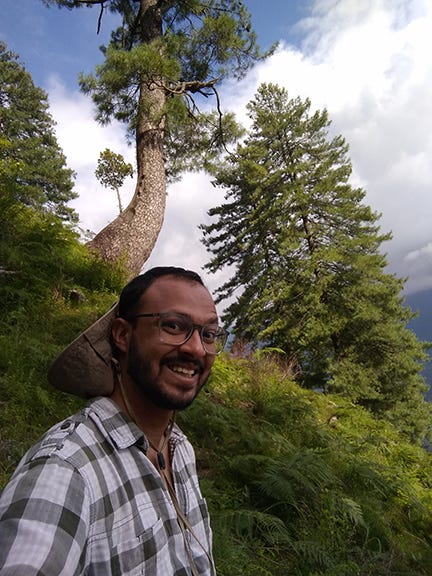

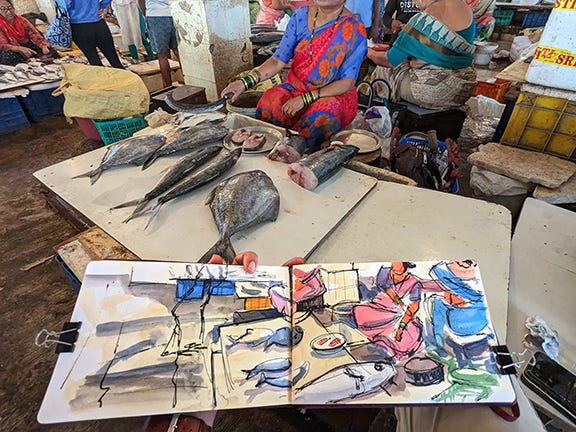
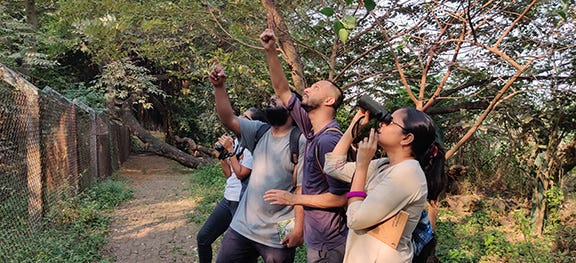
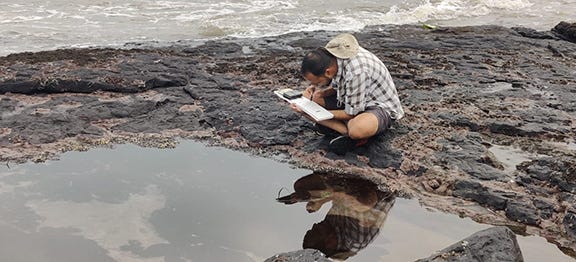
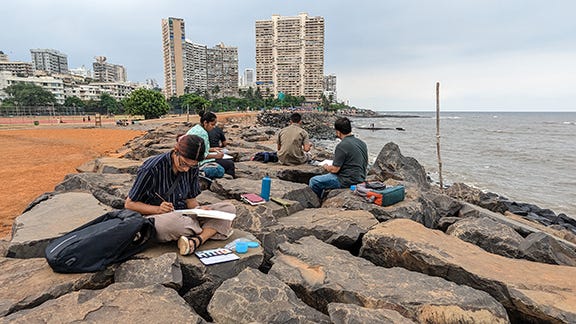




I loved reading this interview!
Thanks for this article! Loved the questions, the answers and the artworks :)